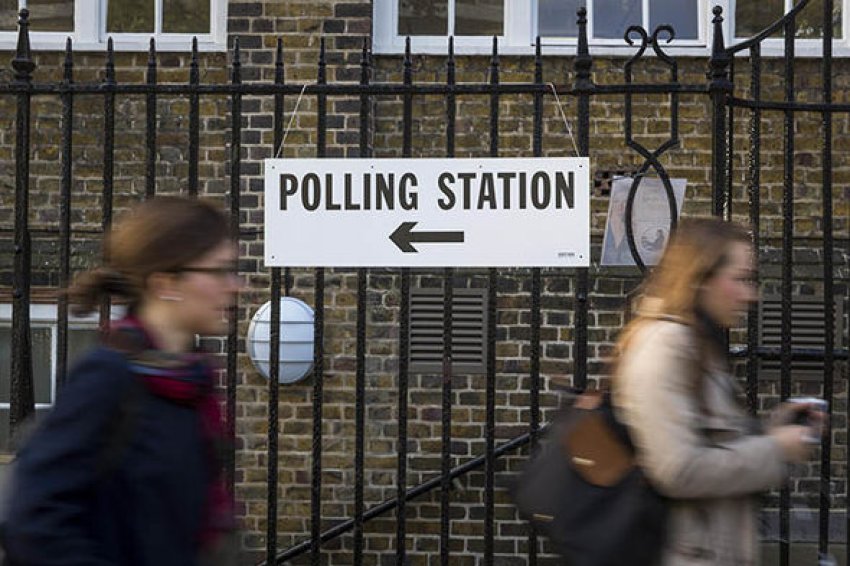
I’m not one of nature’s optimists at the best of times, and a rash of media headlines predicting a doomsday scenario for Labour on June 8 aren’t exactly good for the spirits. But how far are their gloomy predictions born out by the facts of the May 4 local election results| — in which the governing Tories won 38% (up eight points from last year's vote) and Labour just 27% (down 4 points)?
Listening to the commentariat, you’d be forgiven for thinking that voting in local elections is equivalent to taking part in a giant national opinion poll about general election voting intentions. But it isn’t. As Anthony Wells of pollsters YouGov has written, “While the local election results give us some useful pointers, be careful – don’t just assume people will vote the same way; it’s a lot more complicated than that.”
Such common media assumptions are based on a condescending view that voters don’t really understand the context of an election. But isn’t it reasonable to believe that the way people vote in council elections is influenced by local factors, like who will make the best job of clearing up litter, running local libraries or making sure the council is efficiently administered?
Where Labour has been running local councils it has been doing so in a context where it has assumed responsibility for delivering cuts (usually described euphemistically as ‘savings’), including job losses and detrimental impacts on the delivery of services. In this situation, the Tory gains could be understood less as a result of former Labour voters switching in disgust at Corbyn’s leadership, as the dominant media narrative pretends, but rather as the consequence of a differential turnout.
That is to say, Labour voters haven’t mobilised to support a council that has been cutting their services, while the Tories have turned out more of their core vote. This might also impact on national voting intentions, but this is far from automatic.
Equally, since the Tory cuts to council budgets have generally been weighted adversely towards areas represented by Labour-controlled councils, ironically voters might be concluding it is in their interests for the local council to be of same political complexion as the national party of government, especially given the apparent ‘sweetheart deal’ offered to the county council in Surrey. If the alternative is only Labour councillors ‘managing’ more severe cuts, perhaps there’s a certain superficial logic to this.
In this scenario voters wouldn’t be expressing political antipathy to the idea of a Labour government, but making a pragmatic assessment of its likelihood given the current polling, and especially the mountain which remains to be climbed in Scotland.
A question of turnout
At the time of writing, all the results aren’t yet in, but the turnout appears to have been relatively low, even by the standards of local elections which are always significantly lower than in general elections. By contrast, the Labour leadership’s strategy for the general election is to boost turnout significantly, by mobilising voters who have traditionally been switched off from politics.
Obviously, this is an enormous challenge, and the failure to generate higher turnouts at the local and metro mayor elections is not a good indicator. But this may be partly explained by extent to which – notwithstanding recent nods towards devolution and localism – local government has been stripped of most its responsibilities.
Similarly, to simply assume that national vote share from the kind of people who vote in local elections can be automatically equated the breakdown of general election voting intentions is a mistake. Labour’s prospects on June 8 rest on people being more willing to come out to back the national message being pushed by Corbyn and McDonnell than were persuaded to back the rather more (small-c) conservative message of most local Labour candidates.
We should have no illusions – it will be a tall order to deliver that kind of mobilisation in just five weeks’ time. There’s no hiding from disappointing May 4 results. But the indicators aren’t all bad.
The predictions of wipeout in Wales proved unfounded, and significant mayoral victories in the North West are still anticipated at the time of writing. Meanwhile reports suggest that rates of registration have rocketed amongst students, with 93% now registered and most intending to cast a vote, whilst there is scant evidence of the much-heralded Liberal Democrat revival.
Labour’s membership is now at an all-time high – an army of potential activists can help get a socialist message across on the national stage. The enemy is trying to sow demoralisation in the ranks. Let’s not let them succeed.
[Reposted from Red Pepper. Michael Calderbank is Red Pepper co-editor and parliamentary researcher for trade unions. @Calderbank.]